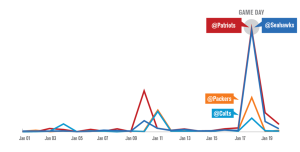Voices, heard and unheard
This is a different kind of post, reflecting on familiar topics. It’s about a “tough week for journalism,” as one of my Facebook friends puts it.
We’ve lost a giant in Bob Simon. His reporting was unfailingly even, incisive and interpretive without falling into subjectivity. He spanned the divide between broadcast dominance and digital disruption. While not always flashiest in phraseology, his voice was distinctive. You knew it was Bob the minute you heard him – and strapped in for an engaging ride.
The adenoidal not-quite-a-sneer of Brian Williams has been silenced, for a while at least. It’s become fashionable to pile on Williams but I won’t do that (except for that crack about his voice): He was the most-watched anchor on network television, which counts for a lot less than it used to but still isn’t chopped liver. His voice was muted through his own actions. It’s conceivable that he will find it again, but I doubt it will be in the same venue (cf. Dan Rather). Maybe that’s for the best.
Jon Stewart is still holding forth, deploying his barely modulated tones to skewer hypocrisy and screw-ups wherever they are found (including the aforementioned Mr. Williams). His voice may reach more people “in the demo” than any of the others; he undoubtedly has created more interest in events of the day. Thank goodness we’ll be hearing him for some indeterminate time to come.
Which brings me to David Carr. On the one hand, he derived his fame from the subjects he covered: Williams, Stewart, Murdoch and other media figures of our time. But he also delivered observations, criticism and correction in a voice that was all his own.
As a media manager in the Twin Cities during the time that Carr was writing about the media scene for the local alt-weekly, his column was a must-read for me. Occasionally, he skewered my operation, but never unfairly. Although I sometimes disagreed with his point of view (as I did with some recent analyses of digital trends), he talked to all the right people and accurately reflected criticisms and conversations in the community. His presence made us better broadcasters and raised the bar for other media writers.
Now, Carr’s voice has been silenced – at an unexpectedly early age. I will miss his contributions to the dynamic, public conversation about where we’re going as an industry and a culture. Most of all, his willingness to engage and entertain contrasting views seems to be in short supply among other pundits. The experiments will continue. Analyses and second-guessing will continue, too. The voices will change, but the echo of Carr’s words will still be heard.









